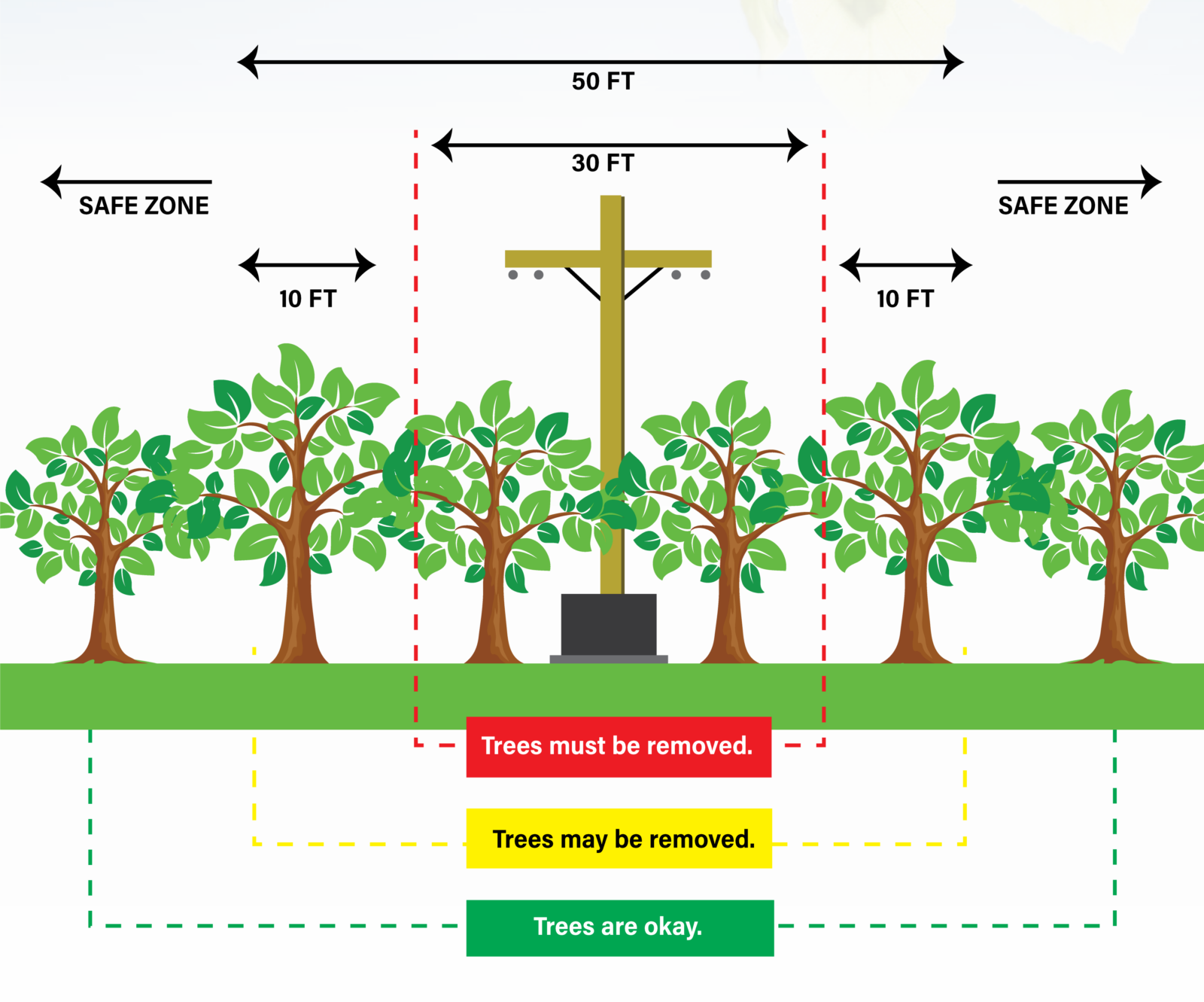Community Electric’s driving force to conduct Vegetation Management is to prove safe, reliable electricity to the Cooperative’s members.

Using proven activities such as tree trimming, tree removal, mowing, and herbicide application to clear non-compatible vegetation from within and around the varying utility resources maintained by the Cooperative, we are able to enact this effort for our members.
CEC recognizes that trees can provide protection from wind, shade in the summer, provide visual buffers, and habitat for various wildlife. However, when trees are planted or grow within, or near, electric rights-of-way not only are these benefits greatly reduced or eliminated, but hazards to safe and reliable electric service are created.
Following sound vegetation management techniques that meet all local, state, and federal regulations while enriching the natural resources, Vegetation Management represents the largest portion of the maintenance budget. This provides maintenance activities for Isle of Wight, Southampton, and Suffolk in a six year maintenance cycle.
Since 2015, all pruning operations have been performed by Xylem. They provide a mix of resources to assist the Cooperative in its effort to maintain vegetation and minimize its impacts. All tree work is performed according to ANSI A300 Pruning Standards.
Community Electric Cooperative began using herbicides to control growth within rights-of-way in 2008. Circuits are re-treated every 3 years to address any new growth that has begun to grow within the right-of-way. Selective herbicides and low-volume application methods are used to target saplings, vines, and other woody plants that can potentially grow tall enough to interfere with the power lines, grow on poles and equipment, or obstruct access to the rights-of-way.
All herbicides used on the system have been tested and approved by the Environmental Protection Agency (EPA). Contractors hired to complete the herbicide applications are Registered Technicians and supervised by a Certified Commercial Applicator.
We want to encourage tree-planting for all members, so when you are deciding what kind of trees to plant, think of where you will be planting, how tall that tree will grow, and if it will interfere with any nearby power lines.
Pollinator Protection Plan Right Tree in The Right Place